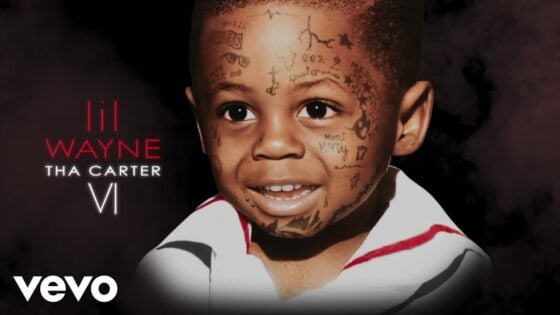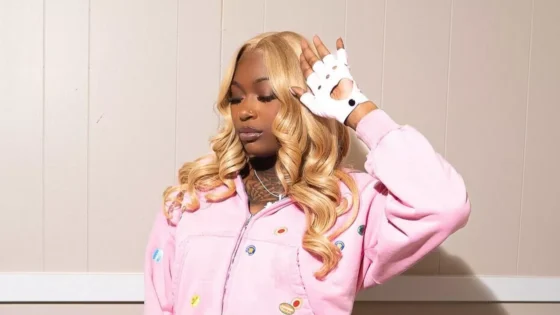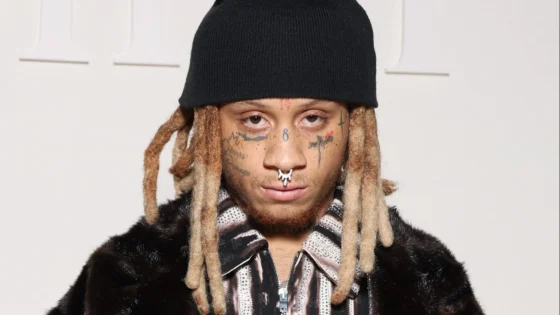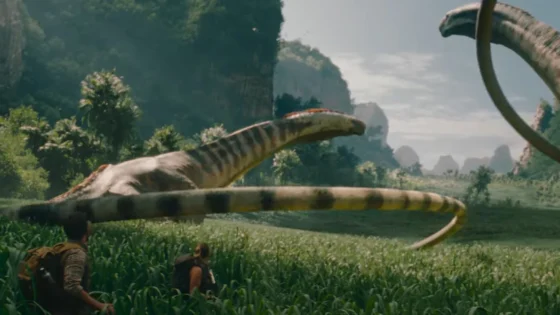Are These the Best Horror Films of the 20th Century?
I’ve been watching horror movies since I was a very young kid and I think it is safe to say that I’ve watched more than the average person. I say this with confidence because I was lucky enough to work at a video store for eight years— and not just any video store, but a video store that had the largest collection of movies in Canada (35 000 plus titles). It also helps I worked at three movie theatres and both jobs allowed me to watch plenty of movies for free for almost a decade.
That said, the history of horror is vast, and trying to compile a list of the 150 greatest horror films of the 20th century is a foolhardy thing to tackle because as hard as I try, there will always be many films that I just won’t ever have a chance to watch. But one can try…
What follows is a list of the 150 greatest horror movies of the 20th century accompanied by a few special mentions, mostly documentaries, short films, and a few features that some people would qualify as horror, but really aren’t.
Editor’s Note: This article has been split into 8 pages to help with loading time.

150 Greatest Horror Movies of the 20th Centruy
Special Mention: M
Fritz Lang’s M is not, strictly speaking, a horror film, but a radical, analytical film that entertains many of Lang’s cinematic obsessions. A simple way to classify it would be a crime drama, but M is far more ambitious. M was Lang’s first sound film and he took the liberty to experiment with the new technology. Here is a movie that knows when silence is more effective than noise. It is a film that features a complex soundtrack including many sounds occurring off-camera and suspenseful moments of silence before a sudden burst of loud noise. In M, a simple whistle or ring of a bell will set the audience off-balance. The director also experiments with pacing. While it begins with fast edits and some brilliant montage work, it slows down with time. Legendary cinematographer Fritz Arno Wagner, who shot several films for Lang (as well as Murnau and Pabst) does some of his best work here. Lang did not want to show any acts of violence or deaths of children onscreen and relied heavily on Wagner to suggest rather than show with the brilliant use of shadows and composition. Like Hitchcock, Lang implies violence and mayhem instead. For a movie with a simple title, there lie plenty of intricacies: the innovative use of sound; the detail of police procedural, and the parallels drawn between the law holders and the criminal underworld. Like the very best horror films, M works on many levels – it is a crime drama, but it’s also a commentary on German society masquerading as a suspense thriller. Mostly responsible for the horror portion of the film is actor Peter Lorre, whose bone-chilling performance is always the prime focus, even when he is not on screen. Equally frightening is Lang’s use of Grieg’s “In the Hall of the Mountain King” from “Peer Gynt.” This is the tune Lorre whistles throughout the film whenever he is on the prowl. Much can be said about M. The film has become a classic which Lang himself considered his finest work. It’s an impeccable film and a model of psychological suspense.
150. Vampire Circus
By the beginning of the 1970s, British Hammer Films began to dwindle. William Hinds had retired from the company, and the studio struggled to produce successful films in the face of the shifting interests of young audiences. The post-modern movement was changing the cinematic landscape, and while the existing Dracula series continued to unleash a string of films, they were met with mixed results. So in the early ’70s filmmakers began to experiment with the vampire mythos in strange and innovative new ways in hopes of breathing new life into the genre. One of those entries is Vampire Circus.
English filmmaker Robert Young made his directorial debut with Vampire Circus, and while it features neither Peter Cushing nor Hammer counterpart Christopher Lee, it is one of the best Hammer films thanks to the direction of Young who keeps things stylish, gory, silly and right out entertaining. Less a standard Hammer melodrama, Vampire Circus is reminiscent of Jean Rollin’s erotic vampire series with its erotically charged imagery. There’s so much sex and nudity here that one could easily label this a ’70s sexploitation film, albeit with rich subtext and multiple readings. But above all, Vampire Circus is far more violent than previous entries in the Hammer canon. Throats are slashed, bodies are torn apart and characters have their heads blown off by shotgun blasts. Director Robert Young tosses in some striking set-pieces as well and shows a real flair for innovative kills. Along with its outlandish art direction, colourful cinematography (shot in Technicolor), lavish sets, circus freaks, and more, Vampire Circus is one of the studio’s most stylish and interesting projects. Undermentioned and underrated, Vampire Circus packs more punch than many of the other titles from the production house.
149. I Walked With A Zombie
In I Walked With A Zombie, a young Canadian nurse named Betsy Connell visits the West Indies to care for the wife of a plantation manager who seems to be suffering from a kind of mental paralysis as a result of fever. Betsy soon discovers her patient isn’t normal – her vital signs are all intact, but she has no emotional or mental awareness. Desperate to cure her, she consults a powerful group of local voodoo practitioners who unleash their black magic. Jacques Tourneur (Out of the Past, Night of the Demon), working with cinematographer J. Roy Hunt, paints a beautiful if haunting motion picture via sight and sound and uses Caribbean folklore and strange religious imagery to transcend the conventions of the horror genre. The lighting, acting, shadows, exotic setting, and music all contribute to creating atmosphere and suspense through suggestion. Despite the title, there are no monsters to be found here; I Walked With A Zombie instead addresses slavery and local superstition built around the moral dilemma of the Christian concept of right and wrong. Tourneau’s direction is incredible and inspiring.
148. Terror at the Opera (Opera)
Opera mixed with horror is a fine fitting for Dario Argento’s extravagant style and dark trademarks as a filmmaker. Terror at the Opera was Argento’s most expensive production, and it shows in his color schemes, use of music, grand set design, and camera work – all of which are wildly inventive and appropriate. The film’s chosen opera is an avant-garde rendition of Giuseppe Verdi’s Macbeth, historically known for bringing bad omens to its cast and crew. Though Opera was never plagued by post-production problems, the director has been quoted as saying that “Opera‘s loveless tone was intended in part as a kind of AIDS metaphor” since star Ian Charleson learned during the filming that he was HIV+. Much like most of Argento’s work, the dialogue is over-the-top, and the acting is at times hammy, but one can’t deny its style and spectacular mood. Opera also features many incredible highlights, including one truly brilliant POV shot: At one point Betty is immobilized, as the killer ties her up and places a row of needles below her eyelids, forcing her to witness the excruciating deaths of her friends. We see the torture of unsuspecting supporting characters through her obstructed, terrifying view. I dare you not to blink.
147. Phantasm (The Never Dead)
Phantasm is an impressive film for 23-year-old director Don Coscarelli, who worked with a minuscule budget and somehow created one of the most memorable horror pics of the late ’70s. Coscarelli not only directed this remarkable film, but he was also its director of photography and its editor. Phantasm became a considerable sleeper hit in 1979, but it never became as popular as some the indie horror hits from the same period. Ask any horror fan if they’ve seen Nightmare On Elm Street, Friday the 13th and Halloween and the answer will most likely be yes, but very few people for whatever reason have seen Phantasm. It’s a shame really because Phantasm is filled with surreal offbeat images – such as the killer sphere that drills into a victims’ head and screws a hole into his brain and spatters his brain out behind it – and creepy characters such as the killer dwarves and the sinister figure of the Tall Man played by Angus Scrimm. The film doesn’t make a lick of sense (Coscarelli actually carved out over half of the film, leaving behind only 88 minutes of a 3-hour cut) — but Phantasm works if only because it’s suggested that the story is a recurring nightmare, complete with a twist ending that seems to validate nothing is what it seems.
146. Valerie and Her Week of Wonders (Valerie a týden divu)
Set in a vaguely defined Transylvanian town sometime in the last century, Valerie and Her Week of Wonders is a bizarre Gothic fable of a young woman’s descent into womanhood. There is no clearly defined story, but essentially the film works as a parable of menstruation. Directed and written by Jaromil Jires, a key member of the Czech New Wave, Valerie and Her Week of Wonders is one long, erotically charged nightmare of sexuality and death. And yes, there are vampires. An easy way to describe the film is to think Alice in Wonderland meets Nosferatu with a screenplay that bears similarities to Neil Jordan’s The Company of Wolves. Valerie features stunning visuals, a remarkable score, and a tour-de-force performance by Jaroslava Schallerová, who was only 13 at the time.
145. Cannibal Holocaust
Cannibal Holocaust was for years berated as one of the most repulsive and morally corrupt movies of the 1970s spate of cannibal films. Like all films of the found footage genre, the events onscreen are seen through the camera of one or more of the characters involved, who often speak off-screen, causing many naive moviegoers at the time to consider it real. The effect, which is by now familiar, was incredibly shocking back in 1980, and after premiering in Italy, the film was seized by a local magistrate, and Deodato was arrested on obscenity charges. He was later accused of making a snuff film due to rumors which claimed that certain actors were killed on camera. The film was later banned in Italy, the UK, Australia, and several other countries due to its graphic depiction of gore, sexual violence, and the inclusion of six genuine animal deaths. Ruggero Deodato’s exploitation opus questions the power of the media in general by commenting on the manipulation of violence in both the news and documentary filmmaking. The film is effective in turning voyeurism into horror and so it’s deserving of its cult status.
144. Just Before Dawn
Just Before Dawn doesn’t do anything new in terms of backwoods horror slashers, but fuck is it ever good. The film is beautifully shot, competently acted — and it features great locations, a brooding atmosphere, and early work from music composer Brad Fiedel, who wrote and performed the film’s eerie minimalist score. It’s also deeply unsettling, and the twist ending is surprisingly effective. Just Before Dawn carefully plays with gender roles and queer stereotypes and by the time the climax rolls along, the passive, quiet good-girl-next-door type (played by Deborah Benson) is kicking ass and taking names. Lieberman cites the 1972 filmDeliverance as the main influence and calls Just Before Dawn his personal favorite of his works.
143. Rabid (1977)
After a strong debut with the paranoid thriller Shivers (1975), David Cronenberg crafted Rabid starring former adult film star Marilyn Chambers as Rose, an attractive young woman who becomes horribly injured in a motorcycle accident and is rushed to a clinic where a pair of experimental plastic surgeons make Rose an unwitting guinea pig in an operation that grafts genetically modified tissue into her body. The tissue is grafted to fire-damaged areas in the hope that it will differentiate and replace the damaged skin and organs only there are unusual side effects: Rose unexpectedly develops an orifice under her armpit and a thirst for human blood. Vampire-like, she roams the city of Montreal, using her beauty to attract victims who fall prey to an incurable, highly contagious disease that turns them into rabid zombies. The disease spreads at an alarming rate and soon, the city is under martial law. David Cronenberg’s second film continues to develop his fascination with bodily horror and explores the relationships between sex and violence, and the slow corrosion of modern society. Rabid is an unconventional vampire film, but it showcased Cronenberg’s distinct aesthetic signature and is the movie that really launched his career. It’s dark, twisted, ugly and includes some disturbing visuals and a plethora of symbolic sexual imagery. There’s no glamour to be found here – even the beautiful Marilyn Chambers spends most of her screentime covered in blood.
142. The House with Laughing Windows (La casadalle finestre che ridon)
The House With Laughing Windows opens and ends as a meditation on suffering and art. The film begins with a series of highly disturbing images juxtaposed with the opening title cards. The first scene (which plays out in sepia tones) features a man chained, tortured and repeatedly stabbed by two hooded figures. We hear his tormented cries of pain amidst the blurry imagery, and a grating voiceover speaks: “colours, my colours, they run from my veins, colours, sweet colours.” Right from the start, it becomes clear that The House With Laughing Windows isn’t your typical Giallo. While it does feature a familiar meta-narrative with a mystery homicidal maniac stalking in the night and a half dozen or so suspects at large, the premise borrows from H.G. Lewis’s Bloodfeast and Michael Powell’s Peeping Tom, and follows a killer who is obsessed with capturing on canvas the reactions of people at the precise moment of their death. The House With Laughing Windows suffers from a middle section rooted too deeply in an unconvincing love interest, but it’s the bookends that make this picture great. The intricate plot will keep you guessing until the very end, and the shocking conclusion (and I do mean shocking), will burn in your memory for a very, very, long time.
141. A Lizard in a Woman’s Skin (Una lucertola con la pelle di donna)
After the success of Dario Argento’s The Bird with the Crystal Plumage, the Italian film industry set out to produce a slate of thrillers with animal-related titles. One of the first was Lucio Fulci’s A Lizard in a Woman’s Skin. Despite its Giallo status, Fulci’s film is a different beast from those made by his colleagues, and earned a reputation as one of Fulci’s finest works, though its climax falls somewhat short. The strength of the movie (as with most Giallos) lies in the visuals. Fulci’s innovative camera work helps reinforce the sense of illusion throughout, and Ennio Morricone’s score complements the picture’s strange mood perfectly. The highlight of the film is an 11-minute nerve-wracking chase sequence through the catacombs of a church, ending with a bloody rooftop encounter. At times it’s a bit slow, but Lizard in a Woman’s Skin is a unique and wild experience. Keep an eye out for the obvious ripoff/homage of Hitchcock’s The Birds.
Special Mention: C’est arrivé près de chez vous (Man Bites Dog)
Rémy Belvaux, André Bonzel, and Benoît Poelvoorde set out to make their first feature film with little resources and little money. In the tradition of filmmakers who can’t afford much film stock, the trio settled for a faux-documentary-style approach – the result is a high-concept satire of media violence that would spoof documentaries by following around a fictitious sociopath named Ben as he exercises his lethal craft. While the cinematic tradition of presenting villains as suave, charming, attractive, and intelligent individuals is nothing new, Man Bites Dog was still ahead of its time. Much like the great Hitchcockian villains such as Joseph Cotten in Shadow of a Doubt, Ben is a wise man full of ideas. He expounds on art, philosophy, poetry, music, nature, society, and life as he slaughters housewives, children, mailmen, pensioners, and other random bystanders he meets along the way. Every frame of this film is shot documentary-style in grainy black-and-white, and the pseudo-realism, complete with rough uneven editing and shaky hand-held camera work, gives a frightening air of legitimacy to the events that unfold. As a critique of our crime-saturated media and violence-dominated lifestyle, Man Bites Dog is a truly compelling indictment. Over the years Man Bites Dog surely has lost its bite, but at the time it was revolutionary, pre-dating such films as John Waters’ Serial Mom, Oliver Stone’s Natural Born Killers and Gus Van Sant’s To Die For. Like it or not, this Belgian award-winning film has gone on to influence everything from The Blair Witch Project to Borat. Man Bites Dog also boasts graphic displays of violence. Yet what’s most disturbing about the mayhem is not so much its explicit presentation, but the actual attitude and tone surrounding the events. In fact, much of the violence takes place off camera or out of frame; but the way the movie presents these events with its own nonjudgmental point of view is what makes it disturbing. As the killing spree intensifies, it becomes clear that the camera crew following Ben at all times is equally responsible for the heinous acts documented. When the fictional crew (led by Belvaux and Bonzel) runs out of money, they rely on Ben to finance the rest of the picture. Eventually, they become active collaborators, and their mere presence alone incites Ben to continue his brutal savagery. At one point they even participate in the film’s most disturbing scene, which depicts the gang-rape and disembowelment of a young woman. Smart, deviant, scary, provocative, Man Bites Dog is a satirical stab at serial killers and our continued unhealthy obsession with them. In short, Man Bites Dog is profoundly disturbing – as it should be.
Pages: 1 2 3 4 5 6 7 8



































PHIL
January 12, 2022 at 1:46 pm
Love your list. I think it is spot on.
interesting that the 3 films many consider shifted cinemas “Tone” is your top three.
The other being Dr.Caligari(60)
Do you see another Horror film that shifted cinema?
Andrew Kidd
July 8, 2022 at 11:36 am
I’m also one of the few who prefer Whale’s first Frankenstein movie over Bride, although they’re both GREAT films. While it’s impossible for any one list to satisfy everyone, one movie I wish I had made it is Island of Lost Souls, which, ninety years later, not only has the power to scare audiences but really get under their skin.